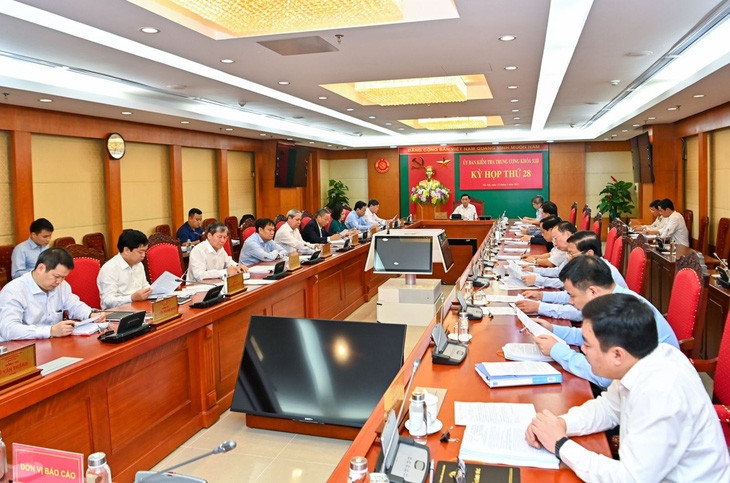The Central Inspection Commission has proposed a plan to rotate cadres in the inspection sector system for the period 2021 - 2026 with conditions, standards and procedures.

28th Session of the Central Inspection Commission
10 years, more than 1,400 inspection officers rotated
According to the Central Inspection Commission, the project on rotating cadres in the Party inspection system aims to correctly assess the current situation and status of the cadre team and the rotation of cadres in the Party inspection sector from the district level and above.
At the same time, research, propose and submit to competent authorities to issue regulations on the rotation of cadres in the Party inspection sector as a basis for Party committees and organizations at all levels to implement synchronously, uniformly and effectively.
According to the project, after 10 years of rotation, the total number of cadres rotated within the industry is 1,467 people, the number of cadres rotated within the industry is 18; the total number of rotations to the industry is 1,783 people.
Of which, 6 members of the Central Inspection Commission and department-level leaders of the Central Inspection Commission were transferred to different sectors and levels.
The number of leaders of inspection committees of provincial, municipal and centrally-run party committees who were transferred to work in various sectors and levels is 165.
In addition, there are 171 leaders of provincial departments, branches, and sectors, and district leaders holding leadership positions in the Provincial Party Committee's Inspection Committee, City Party Committee, and Central Party Committee.
The number of leaders of the inspection committees of the District Party Committees, District Party Committees, and Provincial Party Committees who were transferred to work in different sectors and levels was 1,302. There were 1,612 leaders of district-level departments and offices; Secretaries, Deputy Secretaries, Chairmen of Commune People's Committees and equivalent positions to hold leadership positions of district and county inspection committees.
This shows that most of the transferred cadres have matured, accumulated a lot of experience, and have more comprehensive and practical leadership and direction methods...
However, the number of staff rotation is still limited. Internal rotation within the inspection sector has not received much attention, the number of internal rotations is very small. Specifically, in 10 years, there were 18 staff rotations within the sector out of a total of 1,467 rotations of the sector (reaching 0.12%), which is too low.
Minimum rotation period of 3 years
The project clearly states that for the 2021-2026 term, the rotation of cadres will be carried out within the Party inspection system from the central to district levels and equivalent.
From top to bottom, from bottom to top, between the inspection committee and the Inspection Committee of the same level.
The rotation subjects are leaders and managers in the Party inspection system (except for those under the management of the Politburo and Secretariat) whose leadership and management positions have been approved by competent authorities.
Specifically, members of the provincial and district inspection committees and equivalent (Chairman, Vice Chairman, and full-time members of the Inspection Committee).
Civil servants holding leadership and management positions at the department level of the Central Inspection Commission and at the department level of the provincial inspection commission.
The basic principle of job rotation is to arrange for a position equivalent to the current position.
If necessary, the competent authority shall consider and decide to assign to a higher position an officer with outstanding qualities, abilities, good professional skills, and meeting the requirements of the expected assigned position.
In addition to meeting all general conditions and standards, transferred staff must have worked in the industry for at least 3 years and at least 10 years.
The rotation period is at least 3 years, special cases will be considered and decided by competent authorities.
6 steps in the rotation process Step 1: The Central Inspection Commission issues a plan to deploy the rotation of cadres in the Party inspection system by year and term. Step 2: Based on the need for cadre rotation, the Party Committee directly under the Central Committee reviews and evaluates the cadre team of localities, agencies and units to develop a rotation plan and submit it to the Central Inspection Committee for consideration and approval. Step 3: The Central Inspection Commission presides over and coordinates with the Central Organizing Committee to discuss with localities and units to propose personnel rotation. Step 4: The Central Inspection Commission synthesizes proposals from localities and units, reviews standards, criteria and plans locations, positions and personnel for rotation. Step 5: The Central Inspection Commission approves the list of personnel and rotation positions. Step 6: The competent authority according to the management hierarchy directs and organizes the implementation of the next steps. |
According to Tuoi Tre